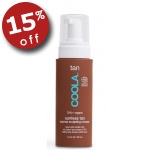Skin Cancer
Skin cancer is the most common type of cancer. Fortunately, many types of skin cancer are easy to cure.
Most skin cancer is caused by sun damage. Ninety percent of skin cancers occur on the face, neck, and arms, where sun exposure is greatest. Light-skinned, blue-eyed people are more likely to develop skin cancer. Dark-skinned people have less risk.
~ Most skin cancers are slow-growing, easy to
recognize, and easy to treat in a doctorís office. A small percentage of skin cancers are more serious.
Skin cancers differ from non cancerous growths in the following ways:
∑ They tend to bleed more than non-cancerous growths do and are often open sores that do not heal.
∑ They tend to be slow-growing.
Most moles are harmless. However, malignant melanomas (one type of cancerous mole) can be fatal and should be promptly treated.
Prevention
Most skin cancers can be prevented by avoiding excessive exposure to the sun. Most damaging sun exposure has occurred by age
20. Repeated sun exposure and severe sunburns are major factors in some types of skin cancer.
Home Treatment
Examine your skin with a mirror or another personís help. Look for unusual moles, spots, bumps, or sores that wonít heal. Pay special attention to areas that get a lot of sun exposure: hands, arms, chest, neck (especially the back of the neck), face, ears, etc. Report any changes to your doctor.
When to Call a Health Professional
Call your doctor if you notice any unusual skin changes or growths, especially if they bleed and continue to change.
If your moles do not change over time, there is little cause for concern. If you have a family history of malignant melanoma, let your doctor know because you may be at higher risk for malignant melanoma. Call your doctor if you notice any of the following changes in a mole:
∑ Asymmetrical shape: One half does not match the other half.
∑ Border irregularity: The edges are ragged, notched, or blurred.
∑ Colour not uniform: Watch for shades of red and black, or a red, white, and blue mottled appearance.
∑ Diameter: The mole is larger than a pencil eraser. (Harmless moles are usually smaller than this.)
∑ Scaliness, oozing, bleeding, or spreading of pigment into sur≠rounding skin.
∑ Appearance of a bump or nodule on the mole, or any change in the appearance of the mole.
∑ Itching, tenderness, or pain.
|




 Today's random forum topics
Today's random forum topics
 What our customers are saying
What our customers are saying